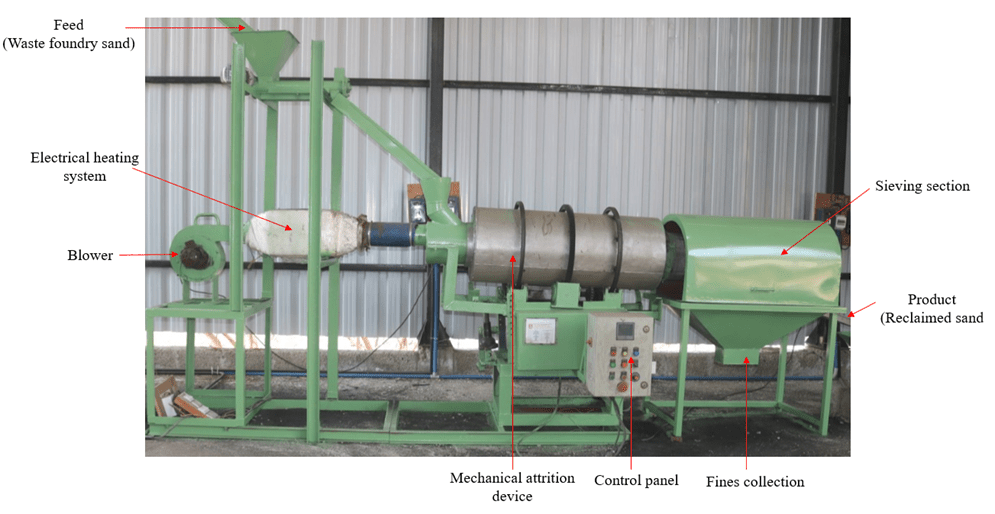Disposing of waste foundry sand (WFS) is a major challenge for the foundry industry today. Utilizing reclaimed sand within the foundry can enhance the economics and efficiency of the process while reducing environmental impact. This invention aims to reclaim waste foundry sand using a two-stage attrition device designed to recycle WFS, allowing it to be reused for making molds and cores.
Removing dead binder from the production of molds and cores is crucial to recycling waste sand, but it presents a significant challenge. Dead binder leads to the disposal of vast quantities of sand in landfills or the formation of sand hills. This waste foundry sand contains heavy metals that can leach into the ground, causing groundwater pollution. Also, open sand hills increase particulate matter in the surrounding areas, posing health risks. There is a need for a cost-effective, scalable solution that reclaims waste foundry sand such that small- and medium-scale foundries can make their operations economically viable, as well as reduce the environmental and health hazards associated with waste dumping.
- This innovative machine reclaims waste sand at rates as low as 50 kg/hr.
- It minimizes the need for thermal treatment that is usually required in conventional methods.
- This device uses only mechanical methods to reclaim green sand.
- Significantly reduced reclamation costs make the process much more affordable as compared to traditional high-temperature treatments.
- It eliminates the need for high-pressure treatments and fluidized beds.
- This machine is suitable for large-scale foundries, as it can be easily scaled up due to its simple construction, compact design, and cost-effectiveness.
The sand is processed in a horizontal rotary vessel divided into two stages. The first stage is responsible for external attrition, where the sand particles are abraded by external media such as agate or cryptocrystalline silica balls, which are slightly harder than the sand particles. The optimal weight, number of balls, drum speed, and sand loading were determined through extensive experimentation to reduce the total clay content to around 2%. The second stage involves particle-particle or internal attrition. The horizontal drum extends into a rotating sieve with a 50-micron mesh. The length of each stage is carefully calculated to ensure the appropriate residence time for removing dead clay from the sand particles. Additionally, the device includes a heating attachment with a burner and blower to provide the heated air needed to remove moisture from the sand.
A pilot / full scale system has been demonstrated in operational environment.
7
This innovation helps in prevention of air and groundwater pollution by reclaiming waste sand efficiently in a cost-effective manner.
- Sand & foundry industry
- Metal casting
- Environmental management
- Sustainable manufacturing and green technologies
Geography of IP
Type of IP
201721023693
468161

